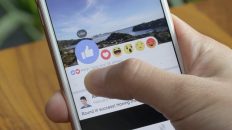 Experts have referred many times to the fact that mainstream journalism is fast changing in the dynamic age of social media, largely owing to the phenomenon termed as the ‘democracy of distribution’. The rapid dissemination of information ensured by tools like Facebook and Twitter, provides every individual now with the scope to function as a journalist, albeit for a short period of time.
Experts have referred many times to the fact that mainstream journalism is fast changing in the dynamic age of social media, largely owing to the phenomenon termed as the ‘democracy of distribution’. The rapid dissemination of information ensured by tools like Facebook and Twitter, provides every individual now with the scope to function as a journalist, albeit for a short period of time.
Power of individuals to control the flow of information comes to the fore during major social upheavals. A recent study explains the manner in which key bits of insights about local, national and international events flowed – as during Obama’s killing and also the Arab Spring uprisings witnessed in Egypt and Tunisia earlier this year. It portrays an interesting picture of how a section of media experts denote ‘news as a process’ actually works.
The study also points to the significant roles played by influential bloggers, and other actors from both mainstream as well as online media during a major breaking news event. It’s an apt portrait of what the collective news picture looks like now. Entitled ‘The Revolutions Were Tweeted – Information Flows During the 2011 Tunisian & Egyptian Revolutions’, it has just been published in the International Journal of Communications.
The research involved the Web Ecology Project researchers; Gilad Lotan of Social Flow, a social-media service and a Microsoft (MSFT) researcher-sociologist, Danah Boyd. They all considered two datasets in details: one was comprised of not less than 168,000 tweets that included hashtags such as #tunisia and #sidibouzid. Another one they analyzed had about 230,000 tweets, containing hashtags such as #jan25 (the date of a major mass demonstration, which apparently played a huge role in the Egyptian revolution) or #egypt.
Researchers broke those who happened to tweet about the two events down into different groups of ‘key actors’ – consisting of activists, digerati, celebrities, individual journalists, bloggers, and mainstream media outlets. It then tracked how the various bits of information about the events during the peak periods did flow from one source to another.
If there’s a marked growth area in media, it’s in the domain of ‘curated news’, wherein real-time filters such as NPR’s Andy Carvin or the BBC’s UGC (user-generated-content) desk verifies and redistributes the news bits that emanate from literally tens of thousands of sources, and employ tools like Storify for presenting a broader picture of what is actually happening at the ground level.
As explained by online media expert Nancy Messieh, the study shows that the personal Twitter accounts of prominent journalists were that much more likely to be engaged with or retweeted by others than official pages of the media hoses they worked for. So the point here, social media is largely about people with common interests connecting with others around an event. The more that organizations try to propagate the human aspect, the more likely they would stand to gain from using these tools.




